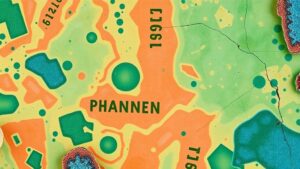The History of Mining Guilds and Cooperative Practices in the Middle Ages
The History of Mining Guilds and Cooperative Practices in the Middle Ages
The role of mining guilds and cooperative practices in the Middle Ages is a significant chapter in the socioeconomic history of Europe. These guilds not only facilitated the extraction of vital resources but also established frameworks for labor organization, quality control, and community support. This article delves into the origins, functions, and impacts of these guilds during a transformative period in European history.
Origins of Mining Guilds
The emergence of mining guilds can be traced back to the 11th and 12th centuries, particularly in regions rich in mineral resources such as Germany, England, and France. As the demand for precious metals and minerals grew with the rise of trade and commerce, skilled miners organized themselves into formal associations.
One of the earliest recorded mining guilds was the “Bergrecht,” developed in the German-speaking territories. This set of mining laws not only regulated the rights of miners but also established many principles of cooperative economics. This regulatory framework allowed guilds to protect their members from exploitation and monopolies, providing a sense of security and community.
Structure and Organization
Mining guilds were typically hierarchical, comprising various roles and responsibilities. structure often included:
- Master Miners: Experienced individuals who oversaw operations and made major decisions.
- Journeymen: Skilled workers who had completed apprenticeships but had not yet attained the status of master.
- Apprentices: Young individuals training under master miners to learn the trade.
These roles created a system of knowledge transfer that ensured the longevity of mining practices and traditions. The collaborative nature of the guild meant that labor was organized efficiently, leading to greater productivity and shared benefits.
Cooperative Practices and Economic Impact
Mining guilds operated on principles that emphasized cooperation among members. Profits from mining activities were often pooled, allowing for reinvestment into better tools and technology. A noteworthy example of this can be seen in the silver mines of Freiberg, Saxony, where guild regulations encouraged collective investments in new machinery.
Plus, guilds often provided essential services to their members, including:
- Legal representation in disputes over mining rights
- Healthcare and social support for injured workers
- Training and educational resources for apprentices
These practices not only improved worker welfare but also helped stabilize local economies. A 13th-century study found that in areas with active mining guilds, local economies saw a 20% increase in trade activity due to the influx of wealth generated from mining operations.
Regulations and Quality Control
Quality control was paramount in the mining guilds. Standards were established to ensure that the ore extracted met certain criteria. renowned “Mining Code of 1248” from the mining district of Lothringen exemplifies this sentiment, establishing vital regulations for extraction methods and purity of materials.
Guilds also played a crucial role in preventing monopolistic practices. By regulating who could mine and how much they could extract, these guilds prevented the concentration of power in the hands of a few wealthy individuals, allowing for a more equitable distribution of resources.
Cultural and Social Significance
Mining guilds contributed significantly to the social fabric of medieval society. They often participated in local governance, influencing laws that affected not only their members but also the broader community. kinship and solidarity formed within guilds fostered a strong sense of community, often seen through annual celebrations and feasts.
For example, guilds would hold processions to celebrate the patron saints of miners, an important event that reinforced community ties and collective identity. Such cultural practices underscored the symbiotic relationship between miners and their communities.
Decline of Mining Guilds
Conclusion
The mining guilds of the Middle Ages were pivotal in shaping not only the economic landscape of their time but also the social structures of communities. Through cooperative practices, regulatory frameworks, and cultural significance, they established a model of organization that supported workers and promoted fair practices in a competitive industry. The lessons learned from these historical guilds continue to resonate in contemporary discussions about labor rights and cooperative economics.
As we reflect on the past, it is crucial to recognize the profound impacts these guilds had on the development of modern labor organizations and their role in addressing the needs of workers today. Investing in cooperative practices and upholding fair regulations remains vital in today’s ever-evolving economic landscape.

